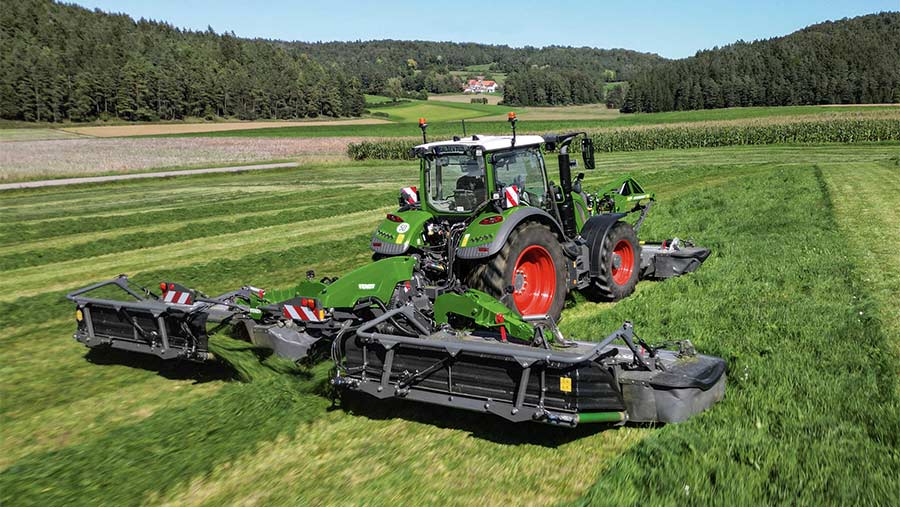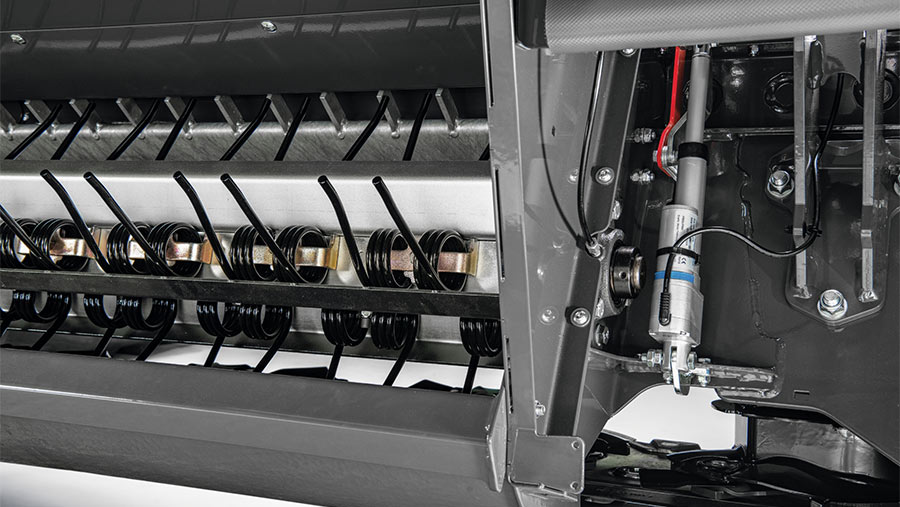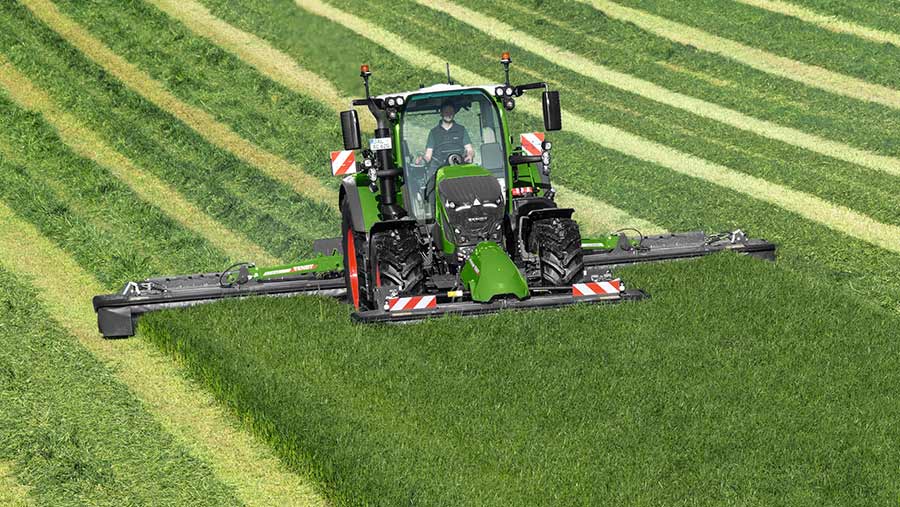Fendt unveils top-end Slicer butterfly mo-co models
 Fendt Slicer twin mower-conditioner can have a tech-fest of features © Fendt
Fendt Slicer twin mower-conditioner can have a tech-fest of features © Fendt Two top-end “butterfly” mowers have been introduced to the Fendt grass equipment range.
They are to replace the current 9.3m Slicer 991 TLKC tine conditioner machine and the similar Slicer 9314 TLKCB with swath grouping capability.
Increased working widths, newly developed grouper units and additional isobus functions are among the upgrades.
See also: Driver’s view: Mark Bates’ Fendt Slicer triple mower
There is also automatic deck suspension adjustment according to forward speed, and automated conditioning intensity adjustment.
The Slicer 960 has a maximum working width of 9.6m, while the Slicer 1010 spans 10.10m, both with 15cm of pin-and-hole manual spacing adjustment to avoid missed cuts on curvy runs and across slopes.
Fendt recommends 3.1m and 3.6m, respectively, front-mounted mower-conditioners as suitable pairings.
And, if chosen from the Slicer FQ range, they can have up to 20cm of automatic side-shift to avoid missed strips based on the inclination of the rear mowers and the tractor’s steering angle.
The ability for the decks to pivot -19deg and +20deg should also enable them to work cleanly over noticeably undulating ground.

Remote adjustment of the conditioning tine counter comb can be automated © Fendt
Floating beds
Available only on Pro versions equipped with isobus electronic controls, the new auto float function regulates the TurboLift hydro-pneumatic suspension to reduce float support at faster speeds.
This helps to maintain a clean cut and consistent stubble length by minimising any tendency to bounce.
The operator enters a target value on the isobus display and selects one of three adjustment levels, which for every 1kph change in forward speed increases the pressure in the system by 0.35bar, 0.8bar or 1.25bar.

The wider-working Slicers can drop three swaths or have a grouper system © Fendt
This selection enables operators to fine tune the system to suit differing acceleration rates, working speeds and ground conditions, and is also available for Slicer FQ front mower-conditioners.
That also applies to another high-tech feature for adjusting crop conditioning intensity, which can be managed manually from the cab or left to an automated control.
Already available on the 8.6m Slicer 860 butterfly unit, one version operates using a sensor that measures the mass of foliage passing through the pigtail tine conditioner and adjusts the counter comb exposure.
Another version uses biomass volumes calculated from remote sensing images and turned into a prescription map.
Both techniques control the two rear mowers and the front mower individually with the aim of achieving consistent wilt rates across the field.
Section Control is a further option to lift the mowers when they move into an area already cut and a triple hectare counter enables contractors to record the work done for up to three customers at a time.
Simpler options
Operators prepared to forego these features can opt for base versions of the new machines without isobus.
They can also choose between the pigtail tine conditioning system (KC) and steel or rubber crimping rollers (RC), which suit delicate leafy crops.
They can also decide whether to lay three individual swaths or use a rear-mounted grouper belt to bring swaths together for greater baling or chopping efficiency.
Prices start at £42,974 for the base Slicer 960.

